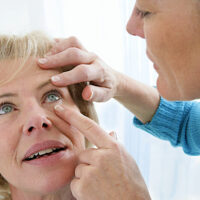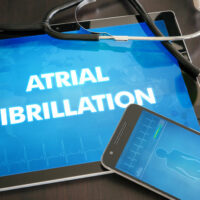14 signs of high cholesterol that should not be ignored

With processed and packaged foods and sedentary lifestyles becoming the norm in today’s fast-paced world, there has been an unprecedented increase in cholesterol levels. About 86 million adults nationwide have total cholesterol levels above 200 mg/dL. High cholesterol can increase one’s risk of developing cardiovascular diseases, stroke, and peripheral arterial disease. Detecting this condition early on can help curb its symptoms. Here are some signs of high cholesterol and tips to control the levels.
14 signs of high cholesterol
- High blood pressure
Cholesterol plaque and calcium can cause the hardening of one’s arteries, increasing the pressure exerted on the heart to pump blood. Consequently, the blood pressure levels of individuals with high cholesterol are elevated. - Type-2 diabetes
According to the American Heart Association, diabetes can increase one’s risk of developing a health condition called dyslipidemia, characterized by abnormal levels of lipids, including high LDL or bad cholesterol and triglyceride levels and low levels of HDL or good cholesterol. Thus, the prevalence of type-2 diabetes increases one’s probability of having high cholesterol. - Peripheral arterial disease
High cholesterol levels can cause the buildup of cholesterol plaque and calcium in the heart, hardening one’s arteries and increasing one’s risk of peripheral arterial disease. Leg numbness, cramping, a cold sensation in the lower leg or foot, and weak pulse in the leg or foot are some symptoms of peripheral heart disease. Thus, if one experiences these signs, it is an indicator to check one’s cholesterol levels immediately. - Stroke
The fatty deposits in the arteries due to cholesterol cause problems with blood flow through the arteries. The sudden breakage of these fatty deposits can lead to the formation of clots, leading to a stroke. Therefore, strokes can be indicators of unmonitored high cholesterol levels. - Chest pain
The buildup of cholesterol plaque in the arteries and the resultant pressure on the heart to pump blood can lead to severe chest pain among individuals with cholesterol. - Pain in the legs
Sometimes, the blood vessels in one’s legs become narrow or blocked due to the accumulation of cholesterol in these areas. This condition, called claudication, can result in severe leg pain and cramping, which may be signs of high cholesterol. - Indigestion and heartburn
High cholesterol can cause the development of cholesterol gallstones, which are made of hardened cholesterol and are typically yellow-green in color. Cholesterol gallstones entail symptoms such as indigestion, abdominal pain, heartburn, and flatulence. Thus, indigestion and heartburn can be symptoms of high cholesterol and should not be ignored. - Skin problems
High cholesterol can trigger the accumulation of fatty deposits underneath the skin, causing yellowish or orangish bumps on the skin. Moreover, cholesterol may block the capillaries supplying the skin with oxygen, leading to skin problems like ulcers and psoriasis. - Fatty liver disease
High LDL cholesterol levels cause the accumulation of fat in the liver, leading to fatty liver disease over time. Thus, individuals with fatty liver disease are likely to have high cholesterol levels. - Tendon xanthomas
Tendon xanthomas are fatty deposits on the knuckles of one’s hands or knees, which indicate high LDL cholesterol levels. Sometimes, these deposits may also form on the Achilles tendon, which is the largest tendon in the body that connects one’s calf muscles to the heel bone. - Corneal arcus
Corneal arcus refers to the formation of a pale white ring surrounding the iris in one’s eye. While this condition is common among older adults and may not indicate high cholesterol in such cases. However, corneal arcus among younger people may be a sign of high cholesterol and high triglyceride levels that have been genetically transmitted, leading to a condition called familial hyperlipidemia. - Xanthelasma
Xanthelasma is the formation of tiny yellow bumps around the eye’s inner corner. These tiny bumps are cholesterol deposits and may be indicative of high cholesterol levels. - Retinal vein occlusion
This condition involves a blockage in the blood vessel carrying blood from the retina and is characterized by symptoms like blurry vision, floaters, and eye pain and pressure. High cholesterol may cause this blockage in the retinal blood vessel; therefore, retinal vein occlusion may be a symptom of high cholesterol levels. - Hairy tongue
In this condition, tiny white bumps appear on the tongue’s surface, eventually becoming enlarged and discolored. This symptom is often a hidden sign of cholesterol and should be addressed immediately.
Tips to manage high cholesterol levels
- Avoid processed and deep-fried foods
Processed and deep-fried foods, including burgers, fries, donuts, and pizzas can significantly contribute to high cholesterol levels and increase one’s risk of developing diabetes and cardiovascular diseases. Thus, processed and deep-fried foods should be strictly limited or avoided. - Have nutrient-rich foods
Complete meals rich in all vital nutrients, including healthy complex carbohydrates, healthy fats, proteins, vitamins, and minerals, can help manage cholesterol levels and prevent cravings for high-calorie foods. One should add foods like cruciferous vegetables, citrus fruits, nuts and seeds, nut butter, dairy products (if not lactose intolerant), and fresh fruit juices to one’s meals to replenish the body with adequate nutrition. - Stay hydrated
Dehydration leads to acidity, which can trigger the build-up of LDL cholesterol in the body. Thus, drinking plenty of water is essential to eliminate cholesterol accumulation and ensure blood purification. - Exercise regularly
A sedentary lifestyle is shown to increase LDL levels and lower HDL levels in the body. Regular exercise, which involves daily workout sessions of at least 30 minutes, can help improve the ratio of HDL and LDL cholesterol. One should incorporate cardio activities like walking, jogging, running, cycling, swimming, dancing, and aerobics into one’s workout routine. In addition, strength-training exercises, yoga, and Pilates can help improve overall fitness and well-being. - Identify and eliminate stressors
Stressors like extremely long work hours and too many household responsibilities over a period can increase one’s cholesterol levels significantly. Thus, it is important to identify and eliminate such stressors to manage one’s cholesterol.





